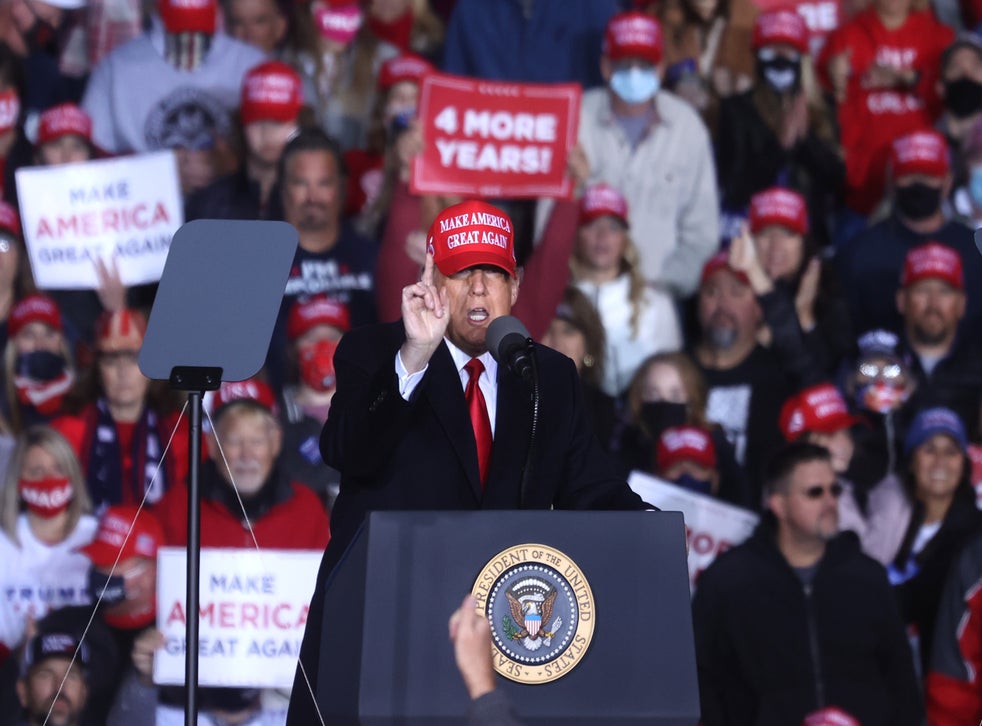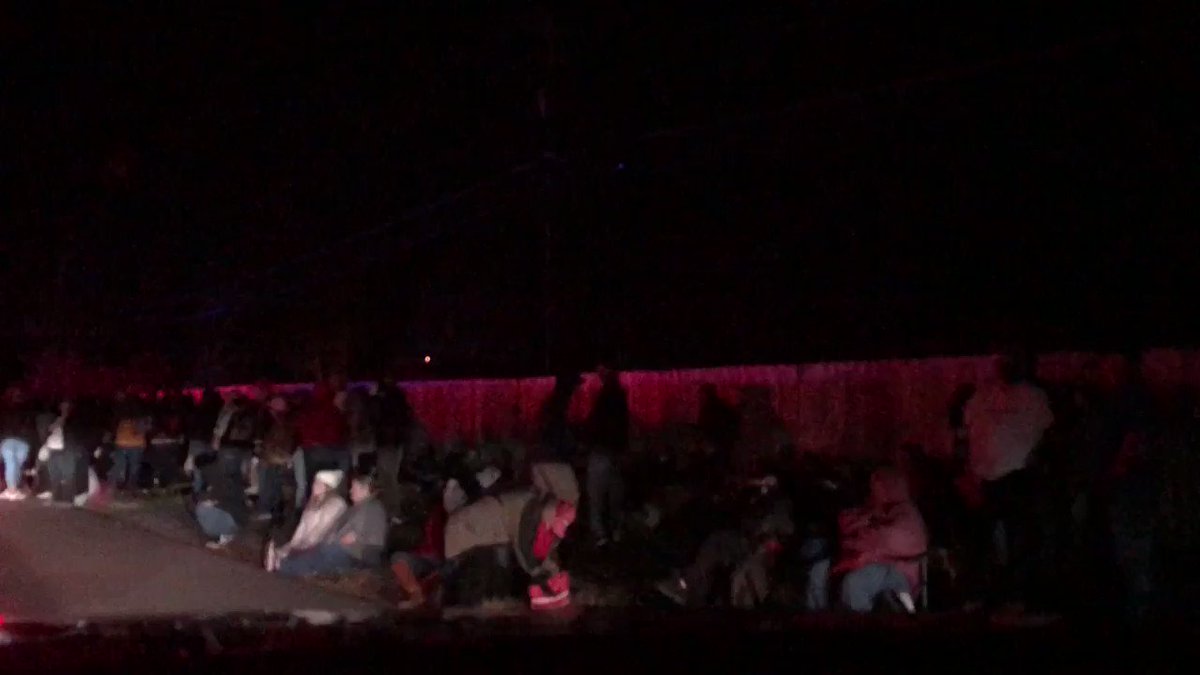by University of Bologna
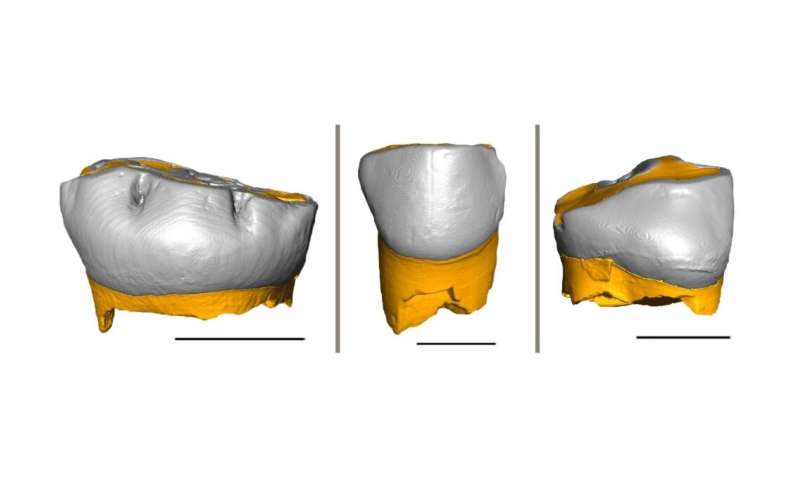
3D Reconstruction Of The Three Neanderthal Milk Teeth Analyzed.
Credit: Federico Lugli
Neanderthals behaved similarly to modern humans in raising their children, whose pace of growth was similar to Homo sapiens.
Thanks to the combination of geochemical and histological analyzes of three Neanderthal milk teeth, researchers were able to determine their pace of growth and the weaning onset time. These teeth belonged to three different Neanderthal children who have lived between 70,000 and 45,000 years ago in a small area of Northeastern Italy.
Teeth grow and register information in form of growth lines—akin to tree rings—that can be read through histological techniques. Combining such information with chemical data obtained with a laser-mass spectrometer—in particular strontium concentrations—the scientists were able to show that these Neanderthals introduced solid food in their children's diet at around 5-6 months of age.
Not cultural but physiological
Alessia Nava (University of Kent, UK), co-first author of the work, says, "The beginning of weaning relates to physiology rather than to cultural factors. In modern humans, in fact, the first introduction of solid food occurs at around 6 months of age when the child needs a more energetic food supply, and it is shared by very different cultures and societies. Now, we know that also Neanderthals started to wean their children when modern humans do."
"In particular, compared to other primates," says Federico Lugli (University of Bologna), co-first author of the work, "it is highly conceivable that the high energy demand of the growing human brain triggers the early introduction of solid foods in child diet."
Neanderthals are our closest cousins within the human evolutionary tree. However, their pace of growth and early life metabolic constraints are still highly debated within the scientific literature.
Stefano Benazzi (University of Bologna), co-senior author, says, "This work's results imply similar energy demands during early infancy and a close pace of growth between Homo sapiens and Neanderthals. Taken together, these factors possibly suggest that Neanderthal newborns were of similar weight to modern human neonates, pointing to a likely similar gestational history and early-life ontogeny, and potentially shorter inter-birth interval."
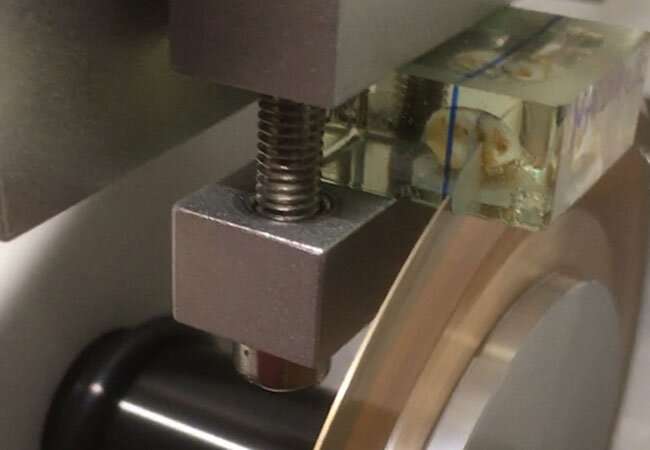
Neanderthals behaved similarly to modern humans in raising their children, whose pace of growth was similar to Homo sapiens.
Thanks to the combination of geochemical and histological analyzes of three Neanderthal milk teeth, researchers were able to determine their pace of growth and the weaning onset time. These teeth belonged to three different Neanderthal children who have lived between 70,000 and 45,000 years ago in a small area of Northeastern Italy.
Teeth grow and register information in form of growth lines—akin to tree rings—that can be read through histological techniques. Combining such information with chemical data obtained with a laser-mass spectrometer—in particular strontium concentrations—the scientists were able to show that these Neanderthals introduced solid food in their children's diet at around 5-6 months of age.
Not cultural but physiological
Alessia Nava (University of Kent, UK), co-first author of the work, says, "The beginning of weaning relates to physiology rather than to cultural factors. In modern humans, in fact, the first introduction of solid food occurs at around 6 months of age when the child needs a more energetic food supply, and it is shared by very different cultures and societies. Now, we know that also Neanderthals started to wean their children when modern humans do."
"In particular, compared to other primates," says Federico Lugli (University of Bologna), co-first author of the work, "it is highly conceivable that the high energy demand of the growing human brain triggers the early introduction of solid foods in child diet."
Neanderthals are our closest cousins within the human evolutionary tree. However, their pace of growth and early life metabolic constraints are still highly debated within the scientific literature.
Stefano Benazzi (University of Bologna), co-senior author, says, "This work's results imply similar energy demands during early infancy and a close pace of growth between Homo sapiens and Neanderthals. Taken together, these factors possibly suggest that Neanderthal newborns were of similar weight to modern human neonates, pointing to a likely similar gestational history and early-life ontogeny, and potentially shorter inter-birth interval."

Researchers at Goethe University cut paper-thin slices off of a Neanderthal milk tooth. The teeth are subsequently put back together and reconstructed Credit: Luca Bondioli and Alessia Nava, Rome, Italy
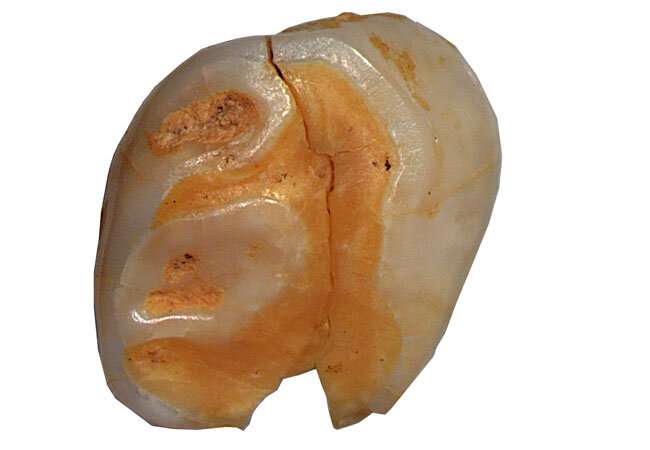

Presumably a Neanderthal child lost this tooth 40,000 to 70,000 year ago when his or her permanent teeth came in Credit: ERC project SUCCESS, University of Bologna, Italy
Home sweet home
The three milk teeth analyzed in this study were found in a limited area of Northeastern Italy, between the current provinces of Vicenza and Verona: in the Broion Cave, in the Fumane Cave and in the De Nadale Cave. Other than their early diet and growth, scientists also collected data on the regional mobility of these Neanderthals using time-resolved strontium isotope analyzes.
"They were less mobile than previously suggested by other scholars," says Wolfgang Müller (Goethe University Frankfurt), co-senior author. "The strontium isotope signature registered in their teeth indicates in fact that they have spent most of the time close to their home: this reflects a very modern mental template and a likely thoughtful use of local resources."
"Despite the general cooling during the period of interest, Northeastern Italy has almost always been a place rich in food, ecological variability and caves, ultimately explaining the survival of Neanderthals in this region till about 45,000 years ago," says Marco Peresani (University of Ferrara), co-senior author and responsible for findings from archeological excavations at sites of De Nadale and Fumane.
This research adds a new piece in the puzzling pictures of Neanderthal, a human species so close to us but still so enigmatic. Specifically, researchers exclude that the Neanderthal small population size, derived in earlier genetic analyzes, was driven by differences in weaning age and that other biocultural factors led to their demise.
This will be further investigated within the framework of the ERC project SUCCESS (The Earliest Migration of Homo sapiens in Southern Europe—Understanding the biocultural processes that define our uniqueness), led by Stefano Benazzi at the University of Bologna.
Explore furtherA 48,000-year-old tooth that belonged to one of the last Neanderthals in Northern Italy
More information: Nava et al., Early life of Neanderthals. PNAS (2020). DOI: 10.1073/pnas.2011765117. dx.doi.org/10.1073/pnas.2011765117
Journal information: Proceedings of the National Academy of Sciences
Provided by University of Bologna
199 shares
Feedback to editors
Featured
Last Comments
Popular
Team achieves first plasma on upgraded MAST, ready to test Super-X divertor
12 HOURS AGO
0
Single-shot 3-D wide-field fluorescence imaging with a computational miniature mesoscope
16 HOURS AGO
0
Nylon finally takes its place as a piezoelectric textile
16 HOURS AGO
0
Inner jet of the blazar PKS 1749+096 investigated in detail
16 HOURS AGO
0
COVID-19 fatalities linked to declining support for Trump and Republicans
17 HOURS AGO
13

Genomic data 'catches corals in the act' of speciation and adaptation
10 HOURS AGO

Bats can predict the future, researchers discover



